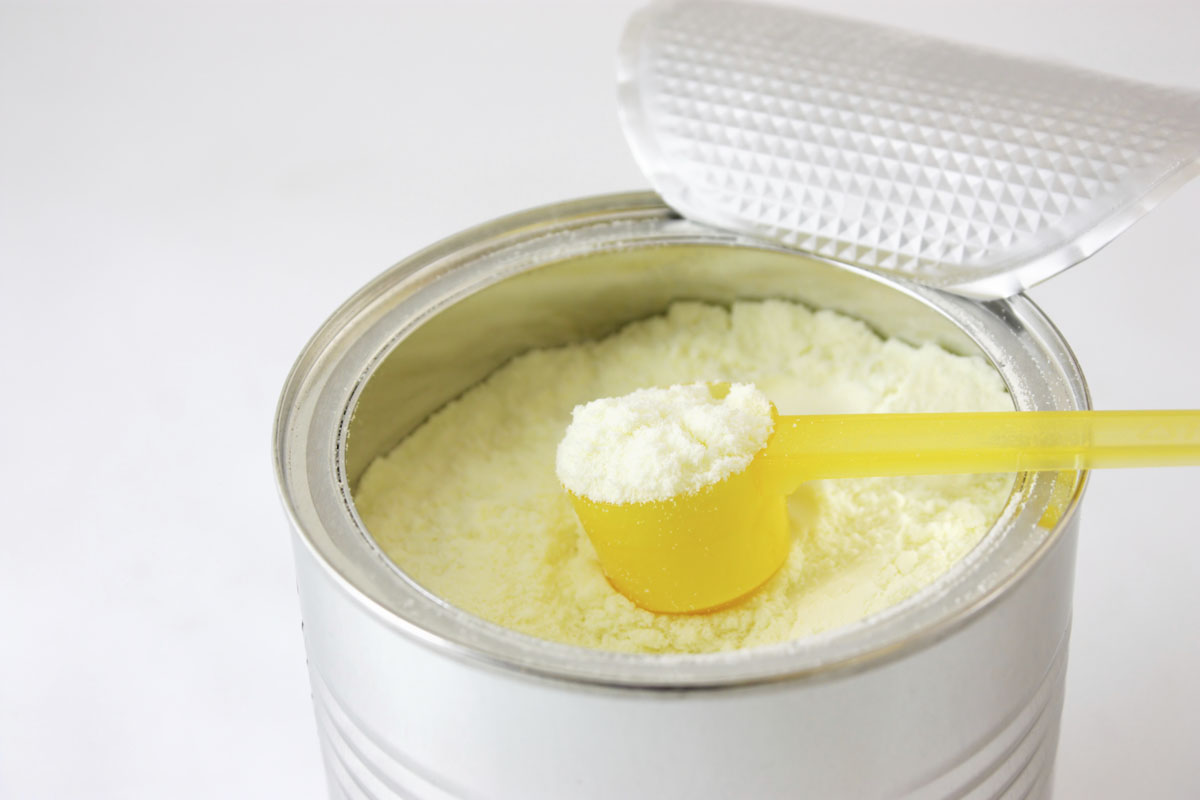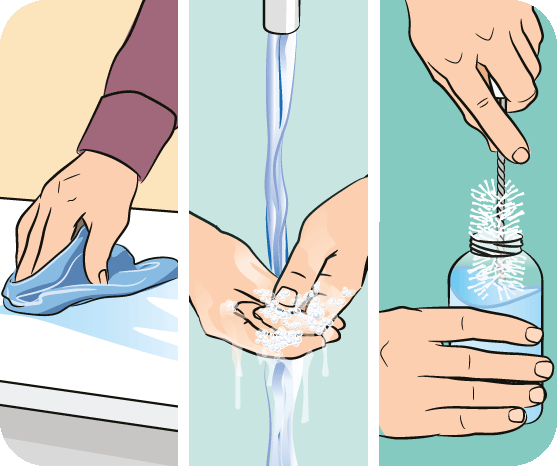Infant Formula Preparation: Safe and Hygienic Practices
Preparing formula correctly is essential for your baby’s health and safety. This guide walks you through everything you need to know about preparing the different types of infant formula with a focus on hygiene and safety.
Why Formula Safety Matters
For many families, infant formula plays a crucial role in their babies’ lives, providing essential nutrients for healthy growth and development. However, improper preparation and handling of formula can pose significant health risks for infants. Understanding why formula safety matters empowers parents to take necessary precautions and ensure their babies receive a safe and nutritious source of nourishment.
Potential Risks of Unsafe Formula:
-
Foodborne illness: Improper hygiene, contaminated water, or incorrect sterilization practices can introduce harmful bacteria like Salmonella, E. coli, or Cronobacter into the formula. These bacteria can cause serious illnesses in infants, leading to vomiting, diarrhea, dehydration, and even blood infections.
-
Nutritional deficiencies: Improper mixing ratios or using non-sterilized water can dilute the formula, leading to nutrient imbalances. This can deprive your baby of essential vitamins and minerals, impacting their growth, development, and immune function.
-
Allergic reactions: Formula contamination or improper storage can create an environment for allergens to develop, even in hypoallergenic formulas. This could trigger allergic reactions in babies with sensitivities, leading to discomfort, skin rashes, or respiratory issues.
Consequences of Unsafe Formula:
-
Dehydration: Dehydration can occur quickly in infants, especially with illnesses caused by contaminated formula. This can lead to serious health complications, requiring hospitalization in severe cases.
-
Developmental delays: Nutritional deficiencies due to improper formula preparation can hinder your baby’s growth and development. This could impact their physical and cognitive development, potentially leading to long-term health concerns.
-
Stress and anxiety for parents: Dealing with a sick infant or potential health complications due to unsafe formula can be incredibly stressful for parents, causing emotional distress and worry.
Importance of Safe Formula Preparation:
-
Following instructions: Precisely follow the manufacturer’s instructions on mixing ratios, sterilization, and storage to ensure proper preparation and prevent nutrient deficiencies or contamination.
-
Maintaining hygiene: Wash your hands thoroughly with soap and water before preparing formula, ensuring a clean and sterile environment to minimize the risk of bacterial growth.
-
Using safe water: Use boiled water or commercially-available sterile water when necessary, depending on your local water quality and your baby’s age and immune system.
-
Proper storage: Store prepared formula in the refrigerator and use it within 24 hours. Discard any leftover formula after a feeding to prevent bacterial growth.
-
Consulting your pediatrician: Seek guidance from your pediatrician regarding safe formula preparation practices, especially if your baby has specific needs or medical conditions.
Infant Formula Preparation Basics: A Step-by-Step Guide
Ensuring your baby receives safe and properly prepared formula is essential for their health and well-being. This section delves deeper into the fundamental steps involved in safe and hygienic formula preparation:
1. Pre-Preparation:
-
Gather your supplies: Ensure you have clean, sterilized bottles, nipples, bottle brushes, measuring spoons, and formula.
-
Wash your hands thoroughly: Use warm water and soap for at least 20 seconds, scrubbing all surfaces of your hands and fingers. Rinse well and dry with a clean, dry towel.
-
Sterilize bottles and nipples: Follow the manufacturer’s instructions for your chosen sterilization method, whether boiling, using a steam sterilizer, or using commercially-available pre-sterilized options.
2. Water Considerations:
-
Water type:
- Tap water: Most areas have safe tap water that can be used for formula preparation. However, if you’re unsure about the safety of your tap water, consult your pediatrician or local health department.
- Bottled water: Choose bottled water labeled “sterile” or “distilled” for formula preparation.
-
Boiling water (if necessary):
- Fill a clean pot with enough water for the desired number of bottles.
- Bring the water to a rolling boil for one minute.
- Allow the boiled water to cool to at least 158°F (70°C) before using.
3. Mixing the Formula:
-
Refer to the instructions: Every formula brand has specific mixing instructions regarding water-to-powder ratios. Never alter these proportions unless advised by your pediatrician.
-
Measure accurately: Use the provided measuring scoop to ensure precise measurement of the formula powder.
-
Warm water first: Pour the cooled (but still warm) water into the sterilized bottle first.
-
Add the powder: Gently add the measured formula powder to the water in the bottle.
-
Secure and shake well: Secure the bottle tightly with the lid and shake vigorously for at least 15 seconds to ensure proper mixing and dissolve all powder completely.
-
Cool to body temperature: Before feeding, test the temperature of the formula on your wrist. It should feel lukewarm, not hot.
4. Additional Tips:
-
Don’t reuse leftover formula: Discard any unused formula left in the bottle after feeding.
-
Cleanliness is key: Wash bottles, nipples, and other feeding equipment after each use with hot, soapy water and sterilize them regularly.
-
Travel considerations: When traveling with your baby, plan accordingly. Pre-measured formula packets or ready-to-feed formula can offer convenient options.
-
Always follow your pediatrician’s guidance: For any questions or concerns related to your baby’s specific needs and formula preparation, consult your pediatrician.
Preparing Different Formula Types: Tailoring the Approach
While the core principles of hygiene and safety remain constant, the specific steps involved in preparing different types of formula vary slightly. Here’s a breakdown of the appropriate methods for each:
1. Powdered Formula:
-
Follow the steps in the “Infant Formula Preparation Basics” section: This includes thorough hand washing, sterilization, and using safe water.
-
Cooling boiled water: If boiling water is required, ensure it cools to at least 158°F (70°C) before using.
-
Mixing:
- Pour the cooled (warm) water into the sterilized bottle first.
- Gently add the measured formula powder using the provided scoop.
- Secure the bottle tightly and shake vigorously for at least 15 seconds to dissolve all powder completely.
- Cool the prepared formula to body temperature before feeding.
Additional Tips:
- Do not pre-mix powdered formula: Always mix formula immediately before each feeding to minimize bacterial growth.
- Store opened formula containers tightly: Seal the formula container securely after each use and store it in a cool, dry place (not the refrigerator).
2. Liquid Concentrate Formula:
-
Shake well: Before opening the container, shake it well to ensure even distribution of the concentrate.
-
Mix according to instructions: Each formula brand may have slightly different instructions for mixing with water.
-
General practice: Typically, for every 1 ounce of concentrate, you add 1 ounce of safe water (boiled or bottled, depending on your needs) to create a ready-to-feed formula.
-
Mix in a sterilized bottle: Follow the same steps as with powdered formula for using a sterilized bottle and ensuring proper mixing.
3. Ready-to-Feed Formula:
-
Convenience option: This type requires no mixing, offering the most convenient solution, especially when on the go.
-
Check for expiration and damage: Always ensure the container is not expired or damaged before use.
-
Shake and pour: Shake the container gently before opening. Pour the desired amount directly into a clean, sterilized bottle.
-
Important Reminders
-
Warm Water vs. Room Temperature: Using warm water for powdered formula helps the powder dissolve fully. However, always cool down the prepared formula to a safe temperature before feeding.
-
Microwave Warning: Never heat bottles in the microwave, as it can create hot spots that can burn your baby’s mouth.
-
Discard Leftover Formula: Bacteria from your baby’s mouth can quickly contaminate the bottle. Discard formula left unfinished after a feeding.
-
When in Doubt, Consult Your Pediatrician: Your pediatrician is the best source for guidance on feeding and formula preparation, especially if your baby has any medical conditions.
Formula Preparation for Travel
-
Pack Carefully:
- Bring pre-portioned single-use powder formula packets for convenience.
- Take bottles of sterilized, cooled boiled water (if needed).
- Consider ready-to-feed formula for simplified travel prep.
-
Cleanliness Remains Key: Always wash your hands carefully before preparing a bottle.
Conclusion
Preparing infant formula may feel overwhelming at first, but with practice and attention to hygiene, it becomes routine. Prioritizing cleanliness, following instructions precisely, and using safe water ensure your baby gets the safest possible nutrition.





